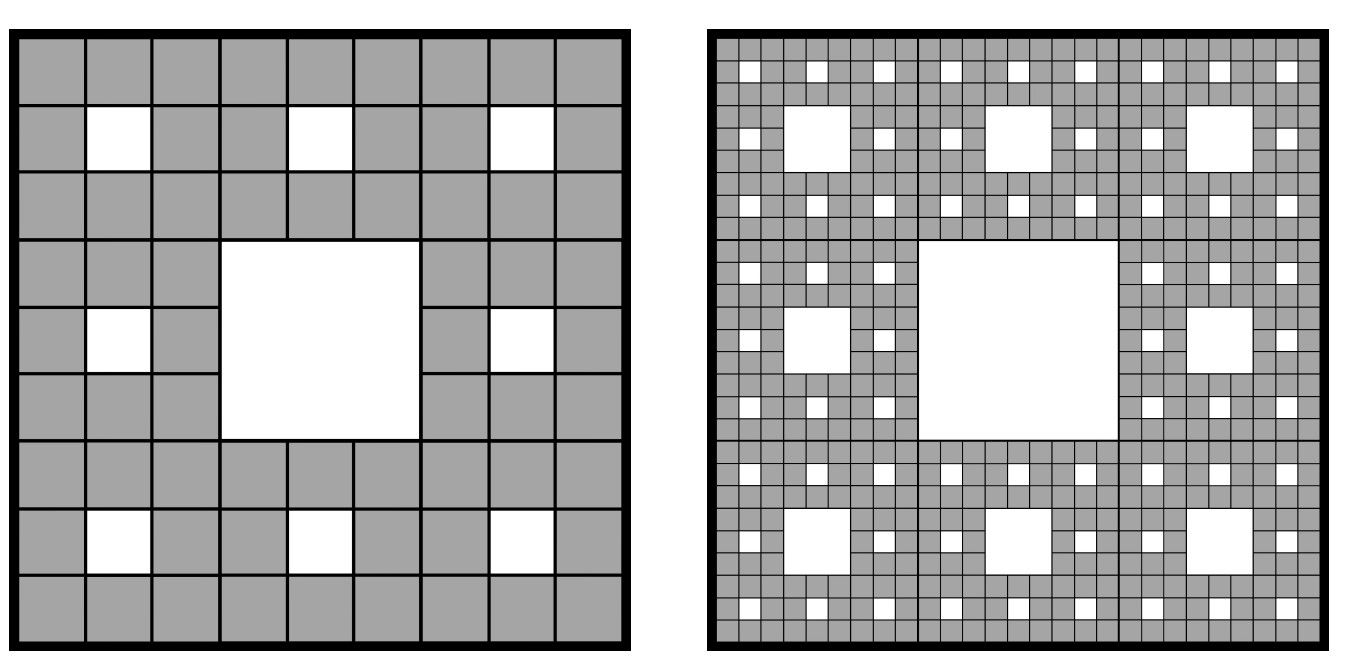
Self Organized Critical Dynamics on Sierpinski Fractal Lattices
Undergraduate thesis in physics, Universidad de los Andes (2023)
Self-organized criticality is a dynamical system property where, without external tuning, a system naturally evolves towards its critical state, characterized by scale-invariant patterns and power-law distributions. This thesis explores the self-organized critical dynamics on the Sierpinski Carpet lattice, a structure which also follows a power-law on its dimension i.e. a fractal. To achieve this, we propose an Ising-percolation model as the foundation for investigating critical dynamics. Within this framework, we delineate a feedback mechanism for critical self-organization and design an algorithm for its numerical implementation. The results obtained from the algorithm demonstrate enhanced efficiency when driving the Sierpinski Carpet towards critical self-organization. This efficiency is linked to the iterative nature of its construction, which significantly influences the formation of clusters. The key outcome of our findings is a novel dependence of self-organized critical dynamics on topology, which may have several applications in fields regarding information transmission.
Universidad de los Andes | Vigilada Mineducación
Reconocimiento como Universidad: Decreto 1297 del 30 de mayo de 1964.
Reconocimiento personería jurídica: Resolución 28 del 23 de febrero de 1949 Minjusticia.
Web design and programming © Gabriel Téllez
